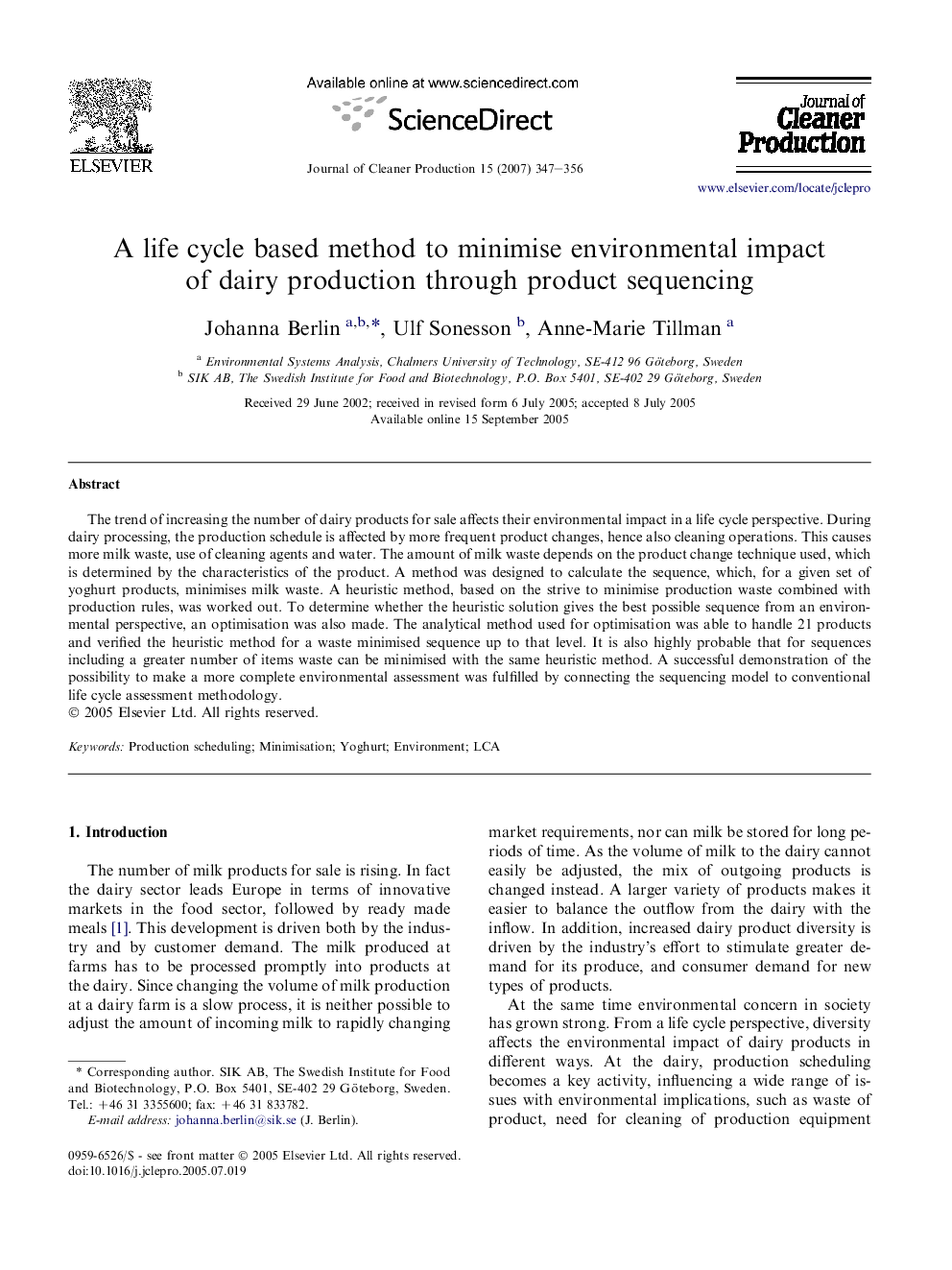| Article ID | Journal | Published Year | Pages | File Type |
|---|---|---|---|---|
| 1747360 | Journal of Cleaner Production | 2007 | 10 Pages |
The trend of increasing the number of dairy products for sale affects their environmental impact in a life cycle perspective. During dairy processing, the production schedule is affected by more frequent product changes, hence also cleaning operations. This causes more milk waste, use of cleaning agents and water. The amount of milk waste depends on the product change technique used, which is determined by the characteristics of the product. A method was designed to calculate the sequence, which, for a given set of yoghurt products, minimises milk waste. A heuristic method, based on the strive to minimise production waste combined with production rules, was worked out. To determine whether the heuristic solution gives the best possible sequence from an environmental perspective, an optimisation was also made. The analytical method used for optimisation was able to handle 21 products and verified the heuristic method for a waste minimised sequence up to that level. It is also highly probable that for sequences including a greater number of items waste can be minimised with the same heuristic method. A successful demonstration of the possibility to make a more complete environmental assessment was fulfilled by connecting the sequencing model to conventional life cycle assessment methodology.
